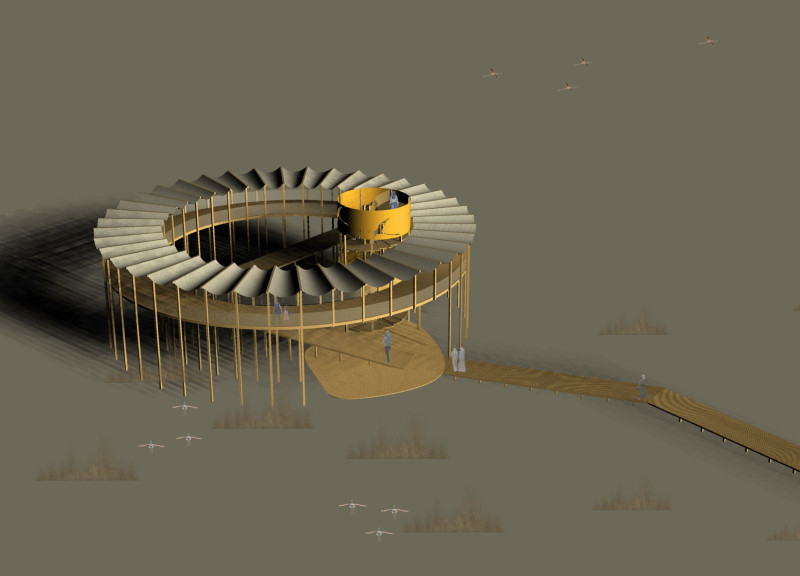5 key facts about this project
Nest Above is an observation tower designed to blend in with its natural surroundings while offering an educational experience about local biodiversity. The tower is located at the end of a boardwalk in a nature reserve. Its design draws inspiration from traditional Bedouin tents and the lightness of flamingo wings. The structure has an elevated form that minimizes its impact on the environment while encouraging visitors to engage with the landscape.
Structural Design
The main structure of Nest Above is supported by thin wooden stilts that lift it above the ground. This design allows the tower to create a sense of lightness. By reducing contact with the ground, the building helps protect the ecological integrity of the site. The elevated form brings the design into harmony with its surroundings and illustrates a thoughtful approach to sustainability.
Accessibility Features
A key feature of the tower is its accessibility for all visitors. A gently sloping wooden ramp leads to the circular observation deck, ensuring that everyone can participate in the experience. This design choice opens the space to families and individuals with different mobility needs. It encourages visitors to explore the nature reserve and take part in the educational offerings.
Interactive Learning
The observation deck provides a panoramic view of the nature reserve, allowing visitors to take in the surrounding ecosystem. Information about local plants and animals is carefully etched onto glass railings. This design keeps the views clear while offering visitors a chance to learn about the environment. It enhances the educational purpose of the tower and fosters a deeper connection with nature.
Visual Aesthetic
A smaller golden tower stands out due to its unique cutouts of local wildlife. This secondary structure offers visitors an additional perspective from above. The golden facade contrasts beautifully with the colors of the landscape, creating a visual interest that ties the architecture to its environment. The overall design encourages exploration and discovery.
The thoughtful arrangement of the tower, with its play of light and space, invites visitors to engage with both the structure and the natural world. Sunlight reflects off the glass surfaces, adding a sense of movement and dynamism to the visitor experience.






















































